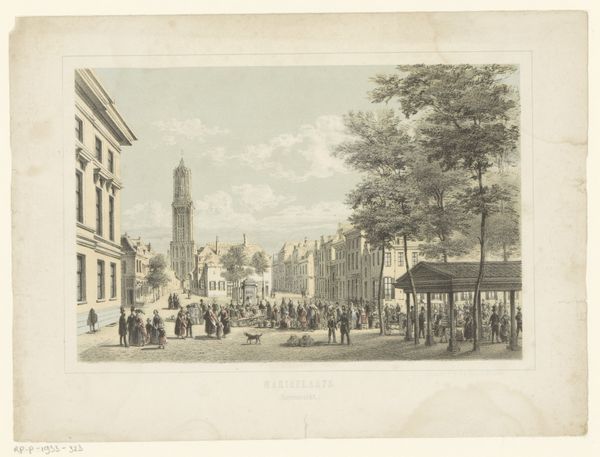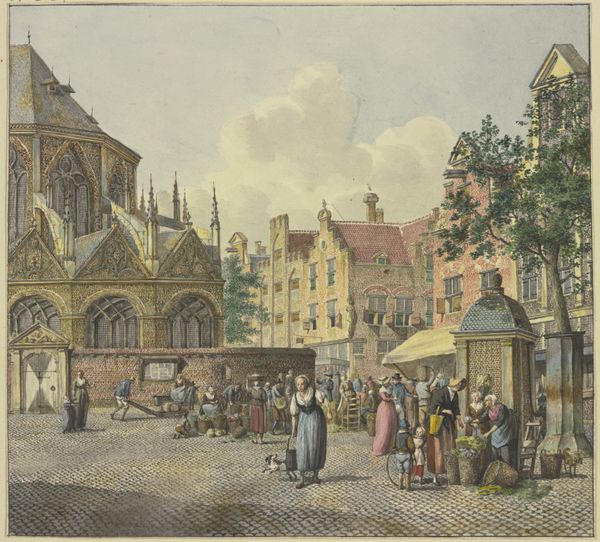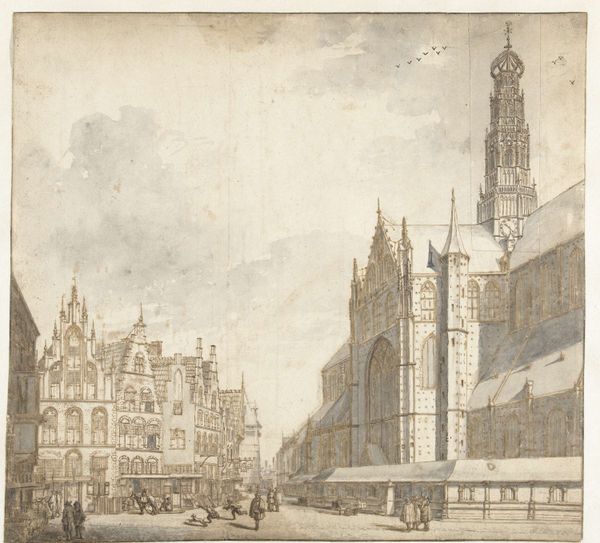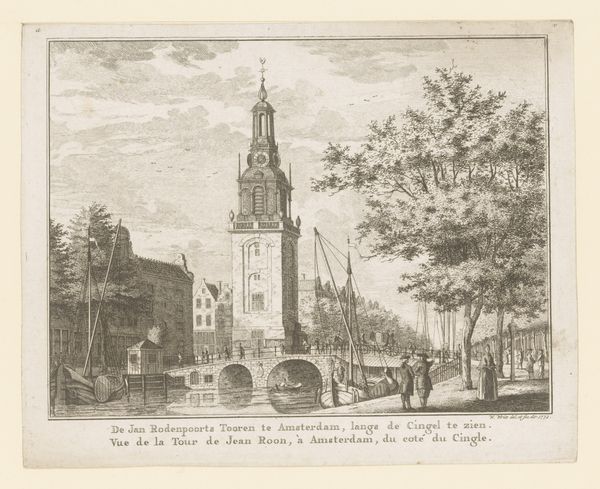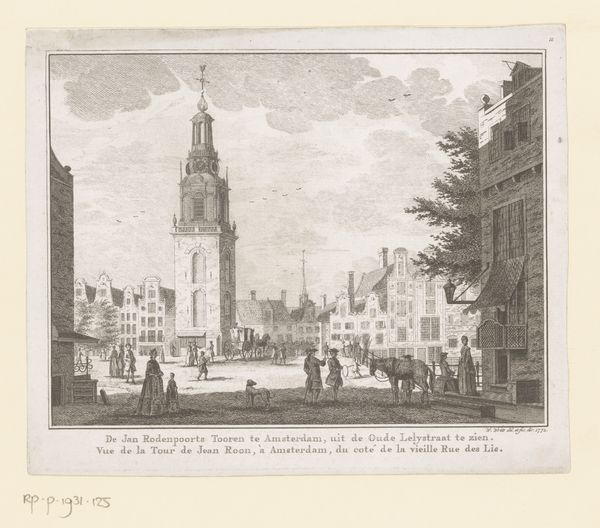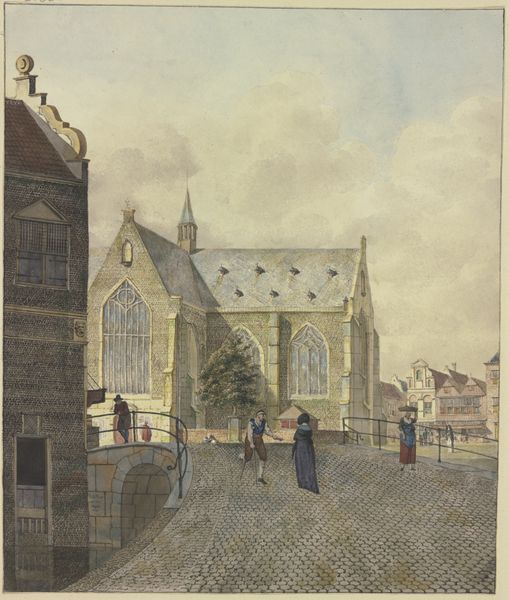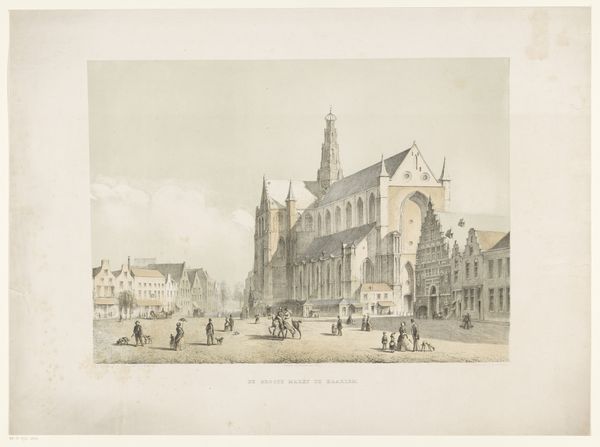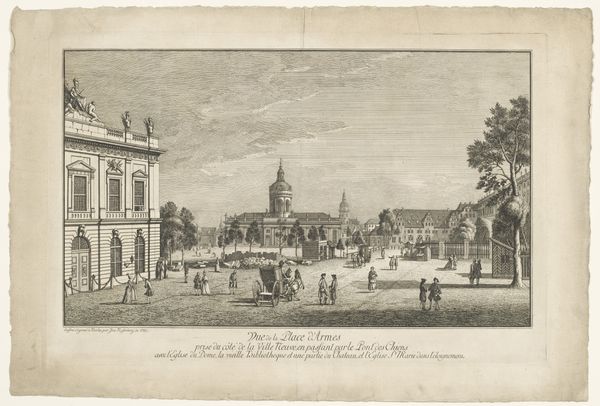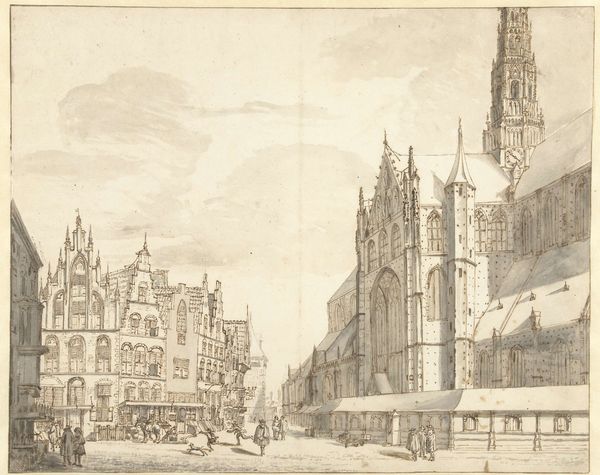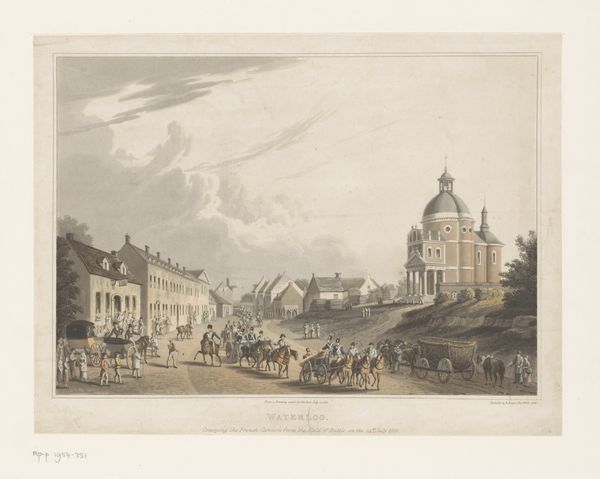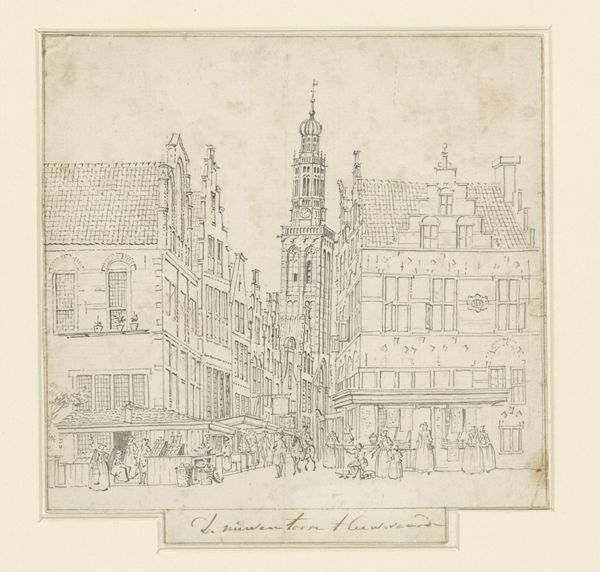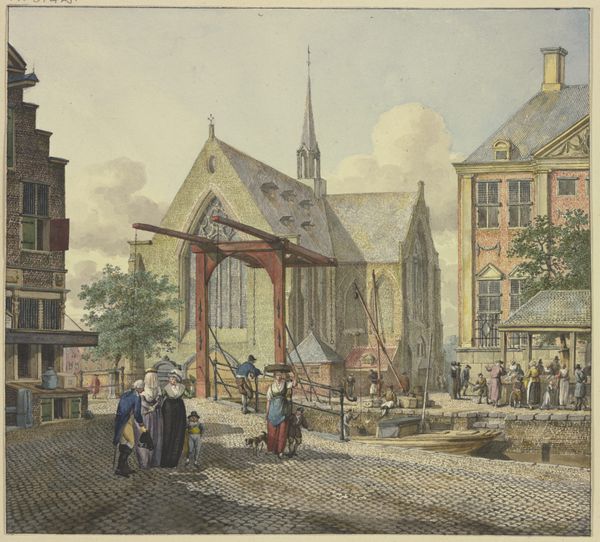
Dimensions: height 317 mm, width 406 mm
Copyright: Rijks Museum: Open Domain
Johannes Bosboom made this watercolor of the Wittevrouwenpoort in Utrecht sometime in the mid-19th century. While seemingly a simple city view, the image opens up important questions about Dutch society and its attitude towards its own history. Bosboom was known for his architectural paintings, often focusing on churches and historical buildings. This interest in architecture came at a time when the Netherlands was grappling with its national identity. The 19th century saw a rise in historical consciousness, and buildings like the Wittevrouwenpoort, which dated back to the 16th century, were seen as symbols of the nation's past. However, it’s important to note that while there was a growing appreciation for historical monuments, there was also a tendency to demolish old structures to make way for modern developments. In this context, Bosboom's painting can be seen as a form of preservation, capturing a disappearing piece of Dutch heritage and inviting viewers to reflect on the value of the past in a rapidly changing world. As historians, we can look at city archives, architectural studies, and contemporary newspapers to better understand the social and political debates surrounding urban development and heritage preservation in the 19th-century Netherlands.
Comments
No comments
Be the first to comment and join the conversation on the ultimate creative platform.

